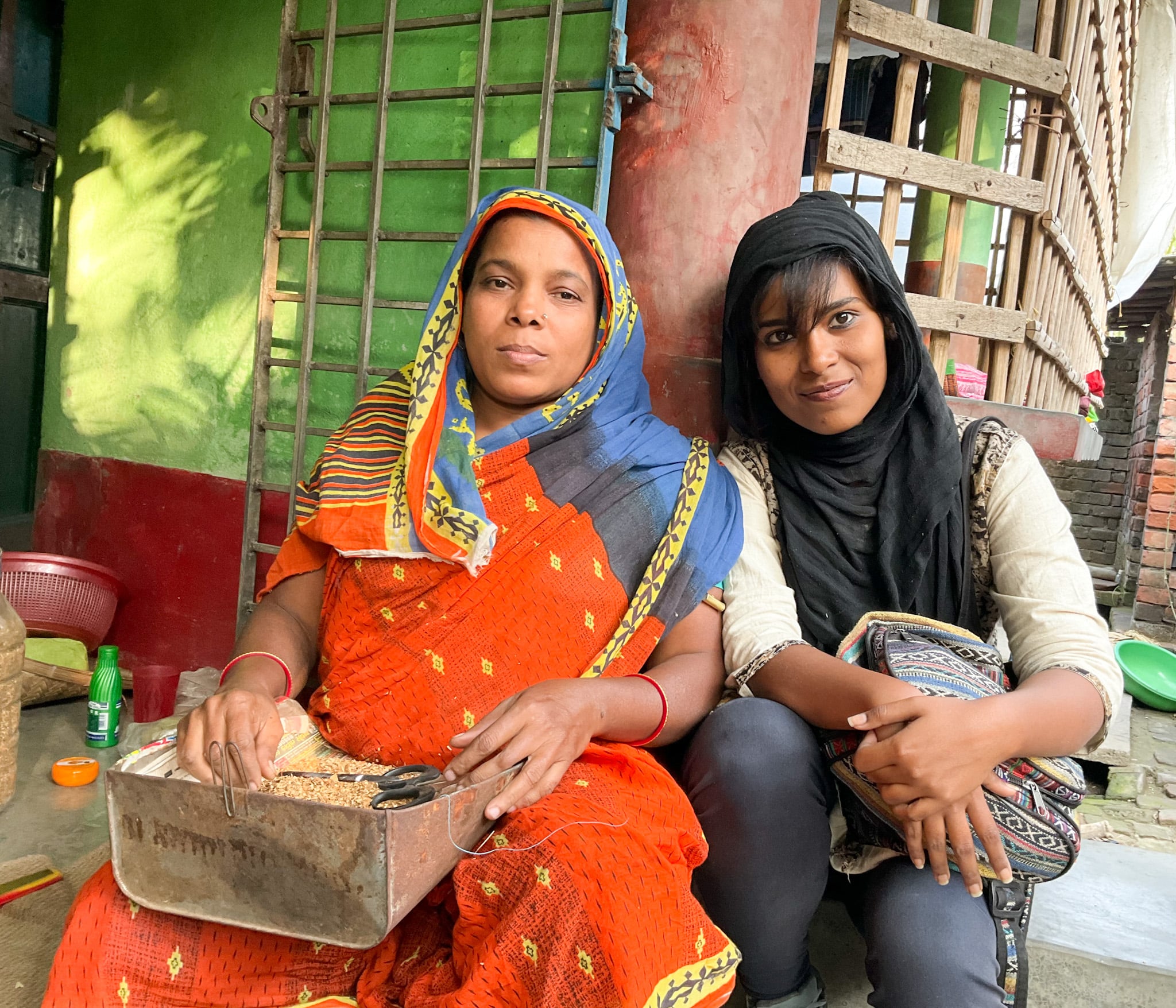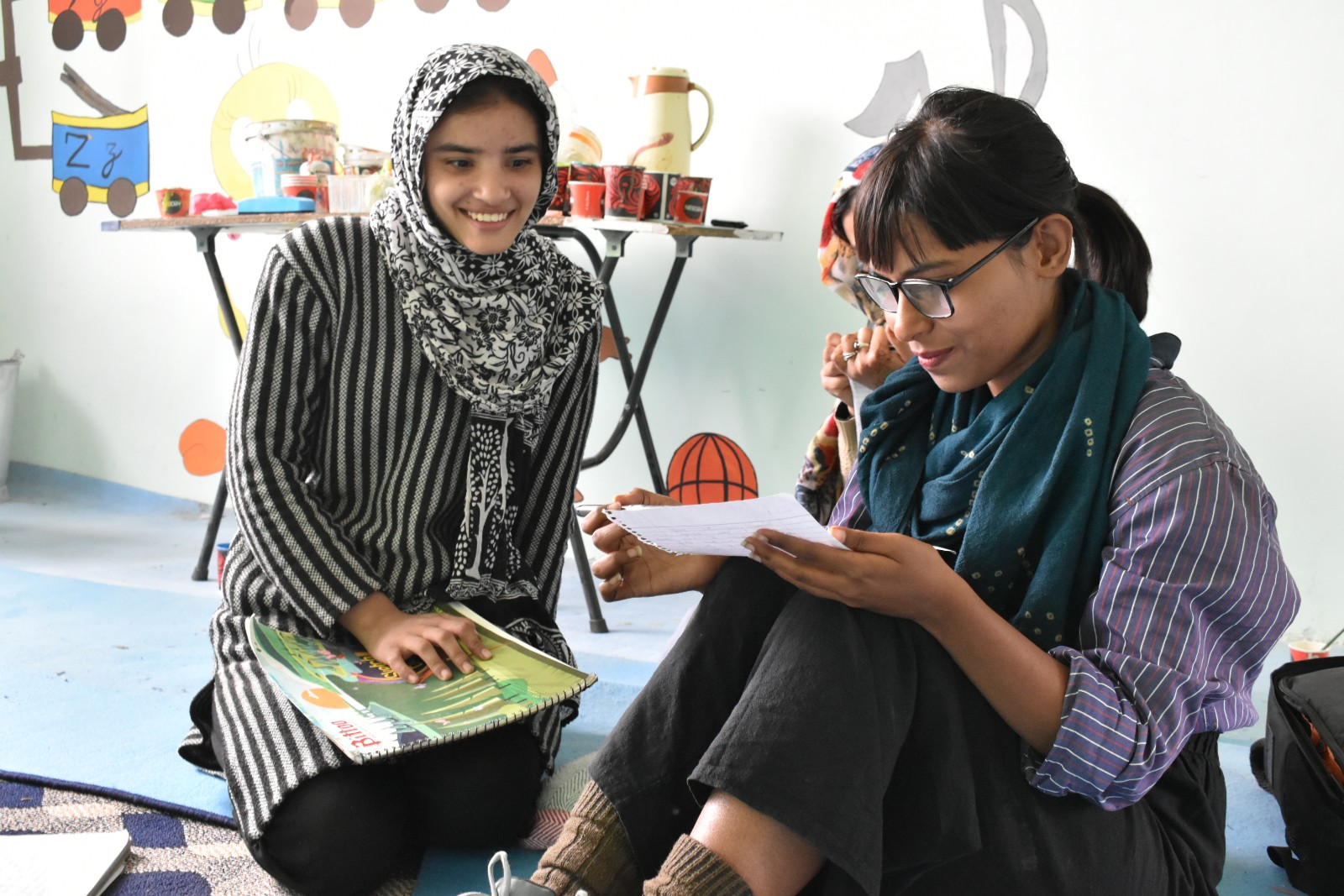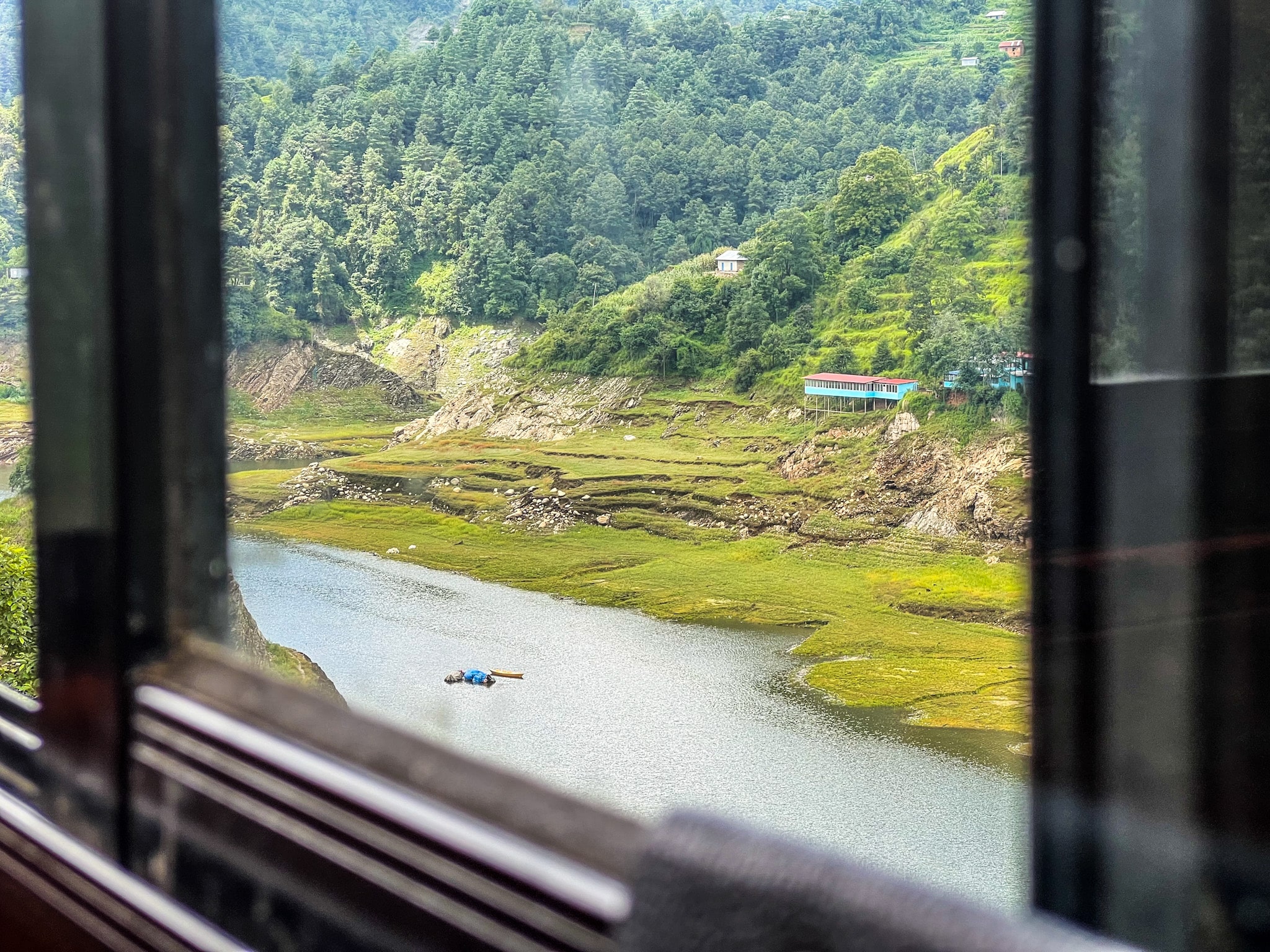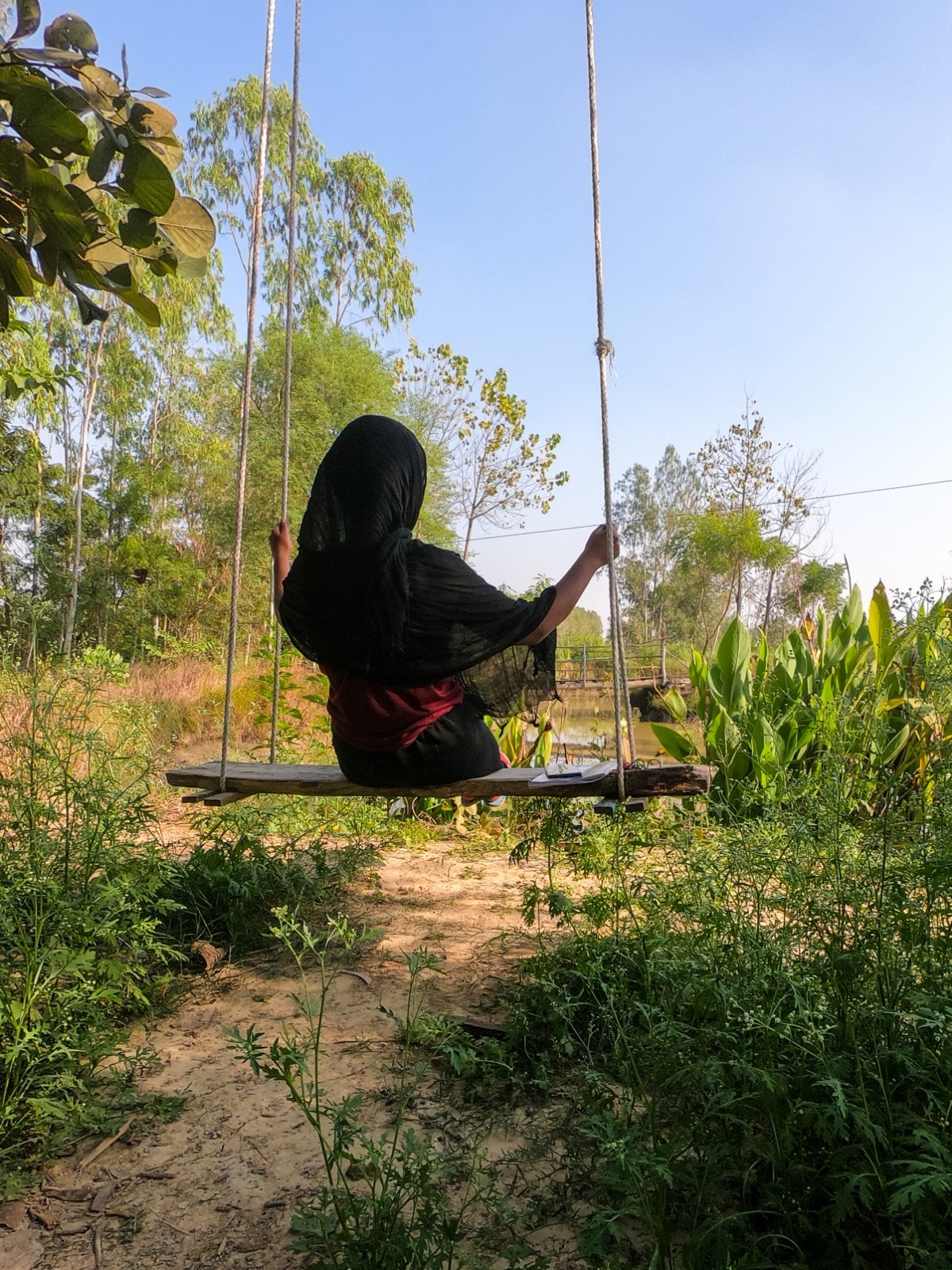The Female Beedi-Workers in the Sundarbans
At the India-Bangladesh border in the Sundarbans, the women make beedi, sustaining their lives marked with extreme poverty and womanhood. Meet the female beedi-workers of Bengal!
‘People in the border area live below the poverty line. We eat only when we can make beedi. Everything depends on beedi-making. Food depends on it’, said Fatema Khatun, a Beedi-worker from Boltola in the Sundarbans.
In the mangrove-laden Sundarbans, women would wake up to the rituals of tidying up the front threshold and the back corridors, as the open streets soak up the morning mist. Almost everyone has a thin bamboo-holder on their lap. In the bamboo-holder, there are strings, crushed nicotine, leaves, and a scissor.

Ichamati, ‘a river of its own will’, flows through the boundary islands of India and Bangladesh. Both the countrymen are allowed to row boats to the mid-river, up to the invisible line of their shares. The Border Security Force can shoot anyone attempting an illegal crossover.
As the day yawns to its end, the outworn blackish fingers of the women roll beedis and tie them up. A process of rhythms. Most families demand 5 to 6 bellies, and the only source of income remains beedi-making.
About 71% of beedi workers in India are women, according to a recent report. There are 49.82 lakh beedi workers in India of whom 18.29 lakh are from West Bengal.
For 1000 beedis, these women from the Sundarbans earn Rs. 200. One family member can earn somewhat between Rs. 500 to Rs. 1000 in a week. The beedi-making tradition percolates from two generations, as the women learned the workings of this livelihood at the age of 12-15, imitating their mothers or mothers-in-law.
Wondering where the men are? Why is there no contribution from the male?
Also read – ‘Vintage Village’ in Uttar Pradesh Will Take You to India
The Three Categories of Men in the Border Areas of the Sundarbans

Migrant laborers. The majority of the men migrate to Tamil Nadu or Kolkata, for the heavy chain of labor work. For three months or more, they work in what the women make out to be ’foreign lands’. Their relationship with the family is communicated through the money sent and the wee months they migrate back.
Those who stay back in the Sundarbans grab anything! In the immediate border areas, brick factories or bhata occupy their days with a daily wage of Rs. 600. But the days are erratic, and often depleted by local men ruminating on the scarcity of opportunities by the doorsteps. Some men are invested in masonry, fisheries, or cutting coconuts from trees. The more well-to-do have lands to thrive on.
Another common thread is disease or fate, adding an invalid male to an already-grappling household. Once a hard-laborer, now decayed and physically exhausted.
Also read – Girls Get Married at the Age of Nine – Rajasthan, India
The Gaps in Their ‘Way-Forward’
‘If your man is good, things can be good for a while. If he is out there looking for other women, he won’t support the family at all.’
In Muslim-dominated villages like Jorabot-tola or Bena, the trend of marrying multiple times prevails. With no sexual awareness and financial settlement, it’s like a child-rearing bank. Many local women reportedly conveyed that the Bangladeshi men would cross the border with the promise of building a family, extricating themselves at the edge of a newborn. In between their late 20s, the women are left with 5-6 kids from 3-4 husbands. How do they sustain themselves? Of course through beedi-making.

Once living off one meal of diluted rice and water, their drive towards life has now been satiated by full bellies. The government-distributed free ration has appeased their hunger. Rice is there. With no skill to nurture and the weekly money to live off, who would sustain the ‘today’ if the women go out to learn a new skill?
Even if they cultivate a new skill, let’s say, in garment or bag making, how would they market the products in the remote Sundarbans, without migration? Sandhya Das, a local tribal woman who migrated to Tamil Nadu with her husband was able to create quite a compensating living structure for themselves, until all the money trickled down with her mother-in-law’s disease back in the village. Now she has circled back to poverty.
It’s a systematic problem. Two earning heads; a woman making beedi, and a man providing from Tamil Nadu. The cumulative money is sustained, not saved. With no savings, a single medical blow would put the domestic economic stream on hold.
It’s a trapped problem. Masum’s mother got married at 15. Now she has chosen another 15-year-old girl to be her 28-year-old son’s wife. ‘I didn’t think they would give her to me, but they did. I just wanted a little girl’, Masum’s mother was giddy. Covering her head in red, the shy girl now rolls beedi and milks a baby.
To topple it all, the natural distress has dwindled the islands. Reduced freshwater supply and the blows of biblical floods. The Sundarban forest lies in the vast delta on the Bay of Bengal formed by the confluence of River Hooghly, Padma (both are distributaries of Ganges), Brahmaputra, and Meghan across southern Bangladesh. The interconnected network of waterways are canals to the deep of the mangrove-forest. This is a region of an amalgam; the freshwater of the rivers originating from the Ganges mingles with the saline water of the Bay of Bengal.
Also read – A Local Perspective on the ‘City of Joy’ Kolkata
How Amphan And the Continuous Floods Affect Their Livelihoods

‘We live on the lowlands. When we have storms or floods, we are left with no source of income. Beedi becomes everything. There is no other way.’ The old man in the white kurta looked down, ‘Everything was flooded during Amphan, we used to swim to the roads. With no food, we were forced to find a place on the streets for two months.’
His wife joined in. ‘It was raining for days, and in a moment, the banks broke in the darkness of the night! My daughter shouted at me, ‘Move! We have to run to the roads!’ Should we take the pillow, food, or the children? The water rose to the neck.’
Amphan was a cyclonic tropical storm that devasted Eastern India, especially West Bengal and Odisha, and some parts of Bangladesh in 2020. With the changing natural courses, people would rather rely on a pre-known vulnerable occupation than a new time-consuming initiative.
‘At least we don’t report to anyone, like in most jobs. It’s up to us.’ These are the women who have lost all drives, with two babies and beedis on the plate. But the woman is wrong. It is not entirely up to them. A middleman doles out the materials and collects the outputs within a week-time frame. Failing to produce 1000 beedis would lead to a cut in wages.
The road to poverty can return through the same path, beyond capabilities and incapabilities. The India-Bangladesh border, the women, the familiarity of the language…. In a different light.
Articles on women beedi-workers in India for further reading:
This article was written as part of a freelance writing project for an NGO-run school Swapnopuron. If the article ‘The Female Beedi-Workers in the Sundarbans’ has interested you, you may also want to read – ‘Tumaru Nau Kisso?’ – Living Rural Life in Garhwal




Leave a Reply